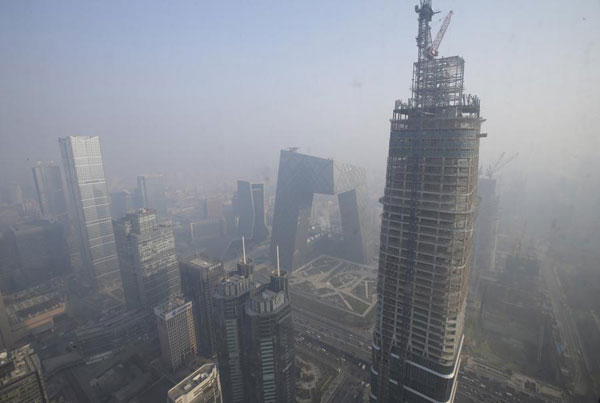 |
|
Construction sites and buildings are pictured amid heavy smog, on the third day after China's capital Beijing issued its second ever "red alert" for air pollution, in Beijing, China, on Dec 21, 2015. [Photo/Agencies] |
Experts were optimistic about achieving the goal to improve the air quality to the national standard but also stressed the project is tough and needs cooperation from every part of society and efficient practice.
He Kebin, head of the School of Environment of Tsinghua University, said the region cannot ever meet the air quality standard if it just means to deal with the greenhouse gas emissions.
"Industry structure and energy structure have to be re-adjusted drastically," said He.
The region is home to China's largest steel and iron manufacturers and some of the most polluted cities in the world. The steel, coke and cement industries are the biggest contributors to greenhouse gas emissions.
In the region, the service industry will nearly take over as the most crucial industry for economic development while heavy industry would fade away by 2030.
Tackling the smog isn't limited to the region. According to the report, the air pollution in neighboring cities and areas may jeopardize the air quality by about 15 to 25 percent if Beijing-Tianjin-Hebei region makes any progress.
This means that all cities must work together to deal with the air pollution problem.
Jiang Kejun, a research professor in Energy Research Institute National Development and Reform Commission, said the region needs to strengthen the strategy of low emissions and watch out for the next round of industrial overcapacity.
He said sectors like medical, education, travel and environment will be the next hits in the service industry as people have high demand and higher requirements for such fields.
This is the first report using quantitative methods to analyze the smog in Beijing, Tianjin and Hebei, released by Tsinghua University, Energy Research Institute National Development and Reform Commission, and Energy Foundation China.
